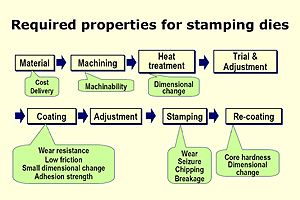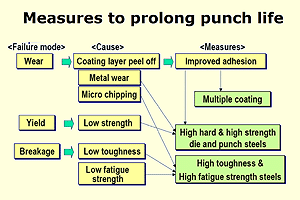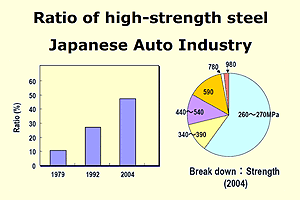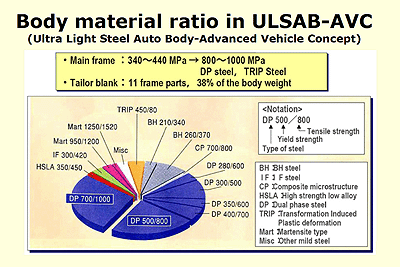Article
Why 8% Chrome Cold Work Die Steels are the Fastest Growing Tool Steels

Manufacturing & Technology
Thomas Schade
Vice President, International Mold Steel, Inc.
In the late 1970’s and early 1980’s, the Japanese Specialty Steel industry took a different direction than their U.S. and European counterparts. The change in direction was forced by the Japanese auto industry moving to increase the usage of high strength steels to lighten vehicle weight. The challenges of forming, cutting, and piercing the high strength steels were proving too severe for conventional tool steels, such as D2 (JIS SKD11). Many European and U.S. producers decided that powder steels would provide the solution. Daido Steel Co .LTD, a leading Japanese specialty steel manufacturer (currently with 40% total market share and 60% market share of specialty die steels) set out to solve the issue in a different manner.
Dr. Kunio Namiki, Managing Director of Daido’s Technical Section, Tool Steels was part of the research team that tackled this problem in the early 1980’s. He stated “We had extensive working knowledge of powder metallurgy, but quickly rejected powder steels as the solution. The high selling cost of powder steels was of course attractive to us as a producer. However, we felt the difficulties in die fabrication, heat treatment, and the inability to effectively weld repair did not make them a value to our customers.”
Daido developed charts 1 & 2 to identify modes of failure caused by forming or piercing high strength steel, and the corrective measures to overcome them. They then began to design an alloy to out perform D2 uncoated and to supply a superior substrate for coatings.
An alloy was designed that, when coupled with proper production techniques would produce a fine grained steel with carefully controlled carbide size and dispersion. This resulted in a tool steel with exceptional impact and fatigue strength. Additional benefits were exceptional machining and grinding properties. The ability of this alloy to utilize high drawing temperatures allowed for high hardness, to HRC 64, and made it a more suitable substrate for many coatings. The alloys base chemistry is: 1.0% carbon, 8.0% chrome, 2.0% moly, 0.25% vanadium. Improvements in manufacturing techniques and parameters remain proprietary information of Daido Steel Co. Ltd. As there was no A.I.S.I or J.I.S designation for this alloy, it was assigned the trade name of DC53.
After conducting extensive trials with Japanese auto producers, Daido introduced DC53 to the Japanese tooling market in 1987. The performance of DC53 caused sales to explode to 700 tons per month by 1989. Other Japanese producers were forced to come out with their own variations of 1% carbon, 8% chrome steels.

Chart 1

Chart 2
Today there are no less than 5 variations (produced by Aichi, Sanyo, Nachi, Hitachi & Koshuha) of this alloy produced in Japan and it dominates the cold work die steel market. Daido due to its superior product, remains #1 with 60% market share in 8% chrome die steels. It is noteworthy that 80% of all Toyota under- body components are produced on DC53 tooling.
Automotive (body and under-body) High-Strength Steels
BH Steel
Any high strength steel that increases in strength as a result of a combination of straining and aging at a temperature and time typical of the automotive paint cycle.
IF Steel (Interstitial Free)
Steels with very low amounts of carbon and nitrogen to which are added small amounts of elements such as titanium or niobium to combine with the remaining interstitial elements such as carbon and nitrogen to remove their strengthening effects.
CP (Complex Phase) Steel
A steel with very fine microstructure of ferrite and a higher volume fractions of hard phases that are further strengthened by fine precipitates.
HSLA (High Strength Low Alloy)
Tensile between 270 and 700 MPa. Yield between 210 and 550 MPa
DP (Dual Phase)
A steel consisting of a ferrite matrix containing a hard second phase in the form of islands.
TRIP (Transformation Induced Plasticity) Steel
A steel with a microstructure of retained austenite embedded in a primary matrix of ferrite. In addition, hard phases of martensite and bainite are present in varying amounts. The retained austenite progressively transforms to martensite with increasing strain.
MART (Martensite type)
During processing the microstructure is transformed almost entirely to hard martensite.
The 8% chrome revolution has taken hold in the U.S. Its growth is driven by Japanese transplants and U.S. manufactures looking for a better way. All of this has made 8% chrome cold work die steels the fastest growing in the U.S. metal working industry today.

